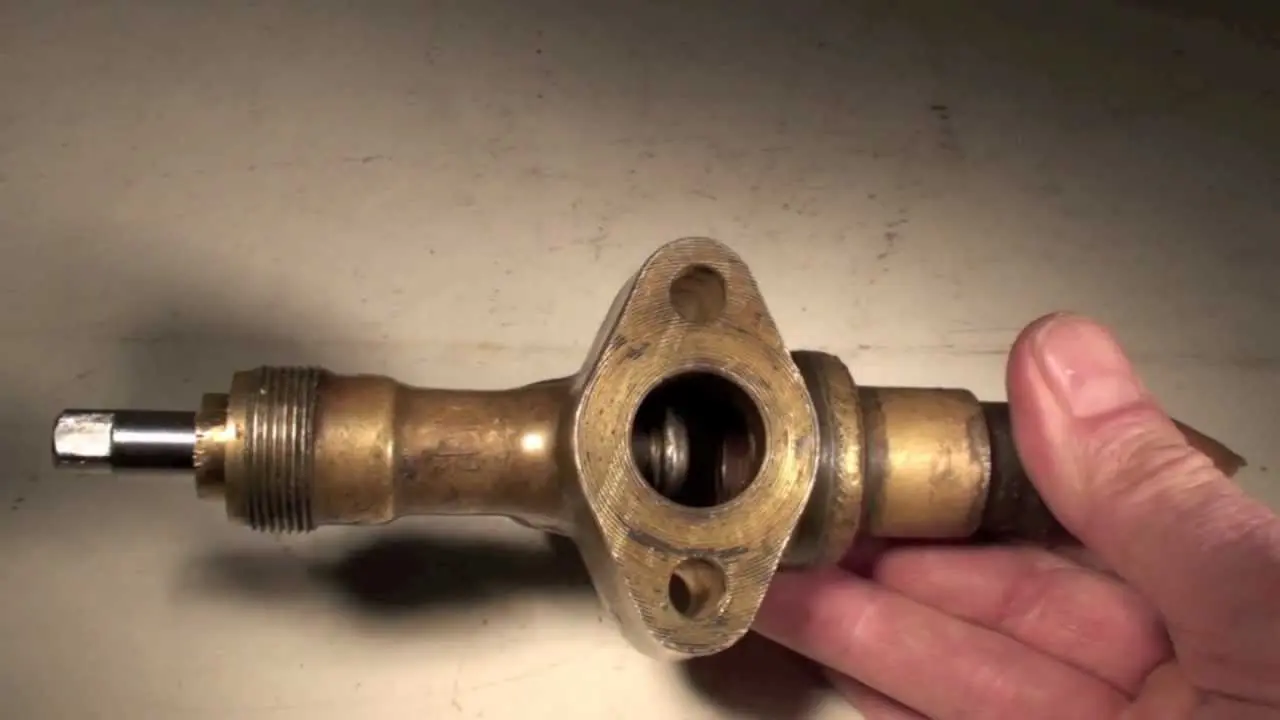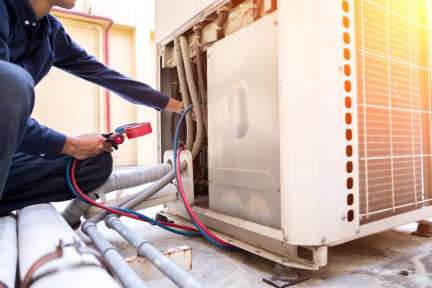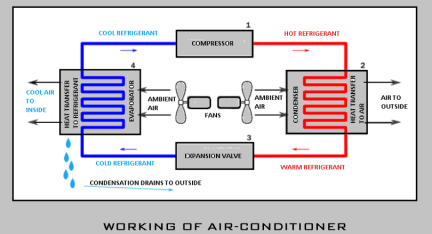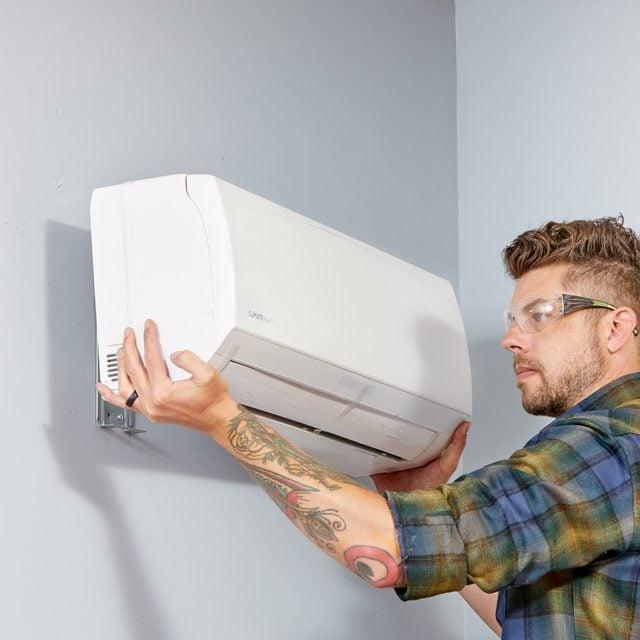Opening service valves on your HVAC system is critical for maintenance, installation, and refrigerant management. Knowing how to reach and operate such valves will help preserve the efficacy of your HVAC system and avoid any expensive repairs or damages. This article will be explaining what HVAC service valves are, their significance, safety measures, and simple directions for opening them over the correct procedure.
What Are HVAC Service Valves?
HVAC systems feature critical components, known as service valves, that facilitate the management of the refrigerant flow in the whole system. Such valves are generally fitted on the external unit near the refrigerant pipes, besides these valves can be categorized into two types:
- Suction Valve (Low-Side Valve): This valve is connected to the larger, low-pressure refrigerant line, often called the suction line.
- Liquid Valve (High-Side Valve): Connected to the smaller, high-pressure line, often called the liquid line.
These valves help technicians and homeowners manage refrigerant flow during system installation, routine maintenance, and certain repairs.
Why Opening Service Valves is Crucial for Your HVAC System
Opening service valves serves several purposes that keep your HVAC system running smoothly and efficiently:
- Refrigerant Access: These valves allow refrigerant to be added or removed from the system as needed, a process essential for balancing pressures and maintaining efficiency.
- System Diagnostics: HVAC technicians use open service valves to connect gauges, which measure refrigerant pressure and help diagnose system health.
- Routine Maintenance: Regularly checking these valves can reveal any leaks or wear and tear in the system, preventing larger issues down the road.
Without properly functioning service valves, refrigerant flow can be interrupted, leading to inefficient cooling, increased energy consumption, or even compressor failure.
Safety Precautions Before Opening HVAC Service Valves
Before handling HVAC service valves, keep the following safety measures in mind:
- Turn Off the Power: Always turn off the HVAC system before touching any service valves. This reduces internal pressure and minimizes the risk of accidental refrigerant discharge.
- Wear Protective Gear: Gloves, safety goggles, and even a mask can protect you from refrigerant exposure, which can be harmful if it comes into contact with your skin or eyes.
- Have a Fire Extinguisher Nearby: Refrigerants are non-flammable, but HVAC systems contain electrical components that could pose a fire hazard during maintenance.
- Work in a Well-Ventilated Area: This helps disperse any refrigerant that may escape when opening the valves, ensuring that fumes don’t accumulate in your working area.
Step-by-Step Guide to Opening HVAC Service Valves
1. Turn Off the HVAC System Completely
Shut down the power to your HVAC system at both the thermostat and the circuit breaker. Reducing pressure in the lines and ensuring there’s no active refrigerant flow lowers the risk of refrigerant release or accidental pressure discharge.
2. Locate the Service Valves
HVAC service valves are typically found on the outdoor condenser unit, positioned where the refrigerant lines enter. Look for two valve stems near the base of the unit:
- Suction Line Valve: Connected to the larger, insulated line.
- Liquid Line Valve: Connected to the smaller line.
Each valve has a different function, so be sure you know which one you are working with to avoid misconfiguration.
3. Assess the Valve Type and Orientation
Service valves on HVAC units may have different designs, but most are straightforward in operation:
- Open (Counterclockwise): Turn the valve counterclockwise to open it, allowing refrigerant to flow.
- Close (Clockwise): Turn the valve clockwise to close it, stopping refrigerant flow.
Make sure to note the valve orientation before fully opening it to ensure you understand its position.
4. Open the Service Valve Using the Correct Tool
Select the correct tool, either an adjustable wrench or a specialized valve key, to open the valve. Some HVAC valves may require a hex key, so ensure your tool fits snugly to avoid damaging the valve stem. Gently turn the valve counterclockwise until you feel resistance stop – be careful not to overextend, as this can damage the valve or refrigerant lines.
Pro Tip: Slow, gradual turns prevent refrigerant from being abruptly released, which can prevent potential leaks and refrigerant loss.
5. Monitor for Proper Function and Refrigerant Flow
Once the valve is open, refrigerant should begin to flow through the system. If you’re using gauges, attach them to the valve to check for appropriate pressure levels. This step ensures that the system is balanced and that the refrigerant is flowing as it should.
Re-sealing and Closing the Service Valves
After performing maintenance or diagnostics, you’ll want to close the valves properly to maintain system integrity:
- Turn the Valve Clockwise to Close: Carefully turn the valve clockwise until it’s firmly closed. Be cautious not to overtighten, as it can stress the valve and cause leaks over time.
- Verify the Seal: Inspect the area around the valve for any signs of refrigerant leakage, like a hissing sound, oily residue, or bubbles if using a leak detection spray. Properly sealed valves should be silent and dry.
When to Call a Professional
While it may seem easy to open or close an HVAC service valve, certain situations call for the assistance of a licensed HVAC professional. Should you come across any of the following, it is advised that you seek professional help:
- Pressure Imbalances: Inconsistent or unexpected pressure readings often indicate an underlying issue that requires advanced diagnostic tools.
- Refrigerant Leaks: If you suspect or observe refrigerant leakage, call a technician immediately, as they have the necessary training and equipment to handle refrigerants safely.
- Complex Repairs: For major repairs, such as compressor replacement or refrigerant recharging, always rely on certified HVAC professionals to ensure safe and compliant repairs.
Final Thought
Opening and shutting the service valves on the HVAC system may look straightforward but the wisdom of knowing their purpose and how to regulate them has a great influence on the performance of the systems. In case you are sure to do the basic maintenance practices of the HVAC system, it is advisable to risk and do the opening of service valves on your own so that the system can run even better. In contrast, hypertensive issues with refrigerants or pressure should be left to trained HVAC technicians in order to avoid any mishaps.
Frequently Asked Questions (FAQs)
Can I open service valves without gauges?
Service valves can be operated without gauge use, yes. However, one cannot tell what the pressure and how much refrigerant is in the system with no gauges. Gauges assess that refrigerant and pressure levels are not exceeded. For this reason, damage and inefficiency of the HVAC system is avoided.
How often should I check HVAC service valves?
Ideally, HVAC service valves should be checked annually during routine maintenance. This ensures they remain in good condition and helps catch any signs of leakage or wear before they lead to larger problems.
What’s the risk of handling refrigerants myself?
Refrigerants are poisonous when breathed or come in contact with the skin. High or low concentrations of refrigerants can adversely affect the HVAC performance and pose a safety threat.




Leave a Comment